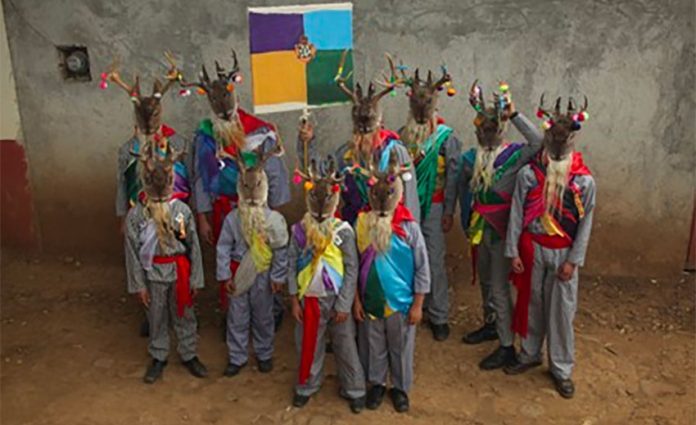To mark the 500th anniversary of conquistador Hernán Cortes’s arrival in Mexico, filmmakers Arturo Pimentel and James Ramey focused their lenses on the culture and tradition of the Purépecha people in the documentary The Emperor of Michoacán.
Featuring interviews with specialists and testimonies from people belonging to the indigenous community, the film highlights the revival of the celebration of Purépecha New Year, which is observed on February 1.
Having been suppressed since the Conquest, the festival resumed in 1983 to strengthen Purépecha traditions and unite the indigenous community that is found primarily in the state of Michoacán.
The film takes the viewer along on a walk undertaken by the inhabitants of several towns in the state on which they take flames to light a fire that must remain lit all year long.
“At first, only 12 people came to the ceremony. Now, after 35 years, 6,000 come to celebrate the lighting of the fire,” reads text featured in the film.
People interviewed for the film say the goal of the ceremony is to recover their pre-Hispanic Purépecha knowledge.
“Purépecha New Year stopped being celebrated in 1530 with the death of Tangaxoan II,” said Néstor Dimas Huacuz, an ethnolinguist from Santa Fe de la Laguna.
Tangaxoan II was the Purépecha emperor, or caltzontzin, at the time conqueror Cristóbal de Olid led the Spanish into what is now Michoacán.
The Emperor of Michoacán vividly displays the music, dances and customs of the celebration, capturing the joy experienced by participants of all ages.
The film also encourages the viewer to reflect on the loss of the Purépecha language and racial discrimination toward native peoples. It also examines the Day of the Dead festival and the archaeological sites in Pátzcuaro.
The directors were inspired to make the film after deciding to restore an abandoned theater in Pátzcuaro named after the Purépecha emperor. The Cine-Teatro Emperador Caltzontzin has become Pátzcuaro’s biggest cultural forum.
“The restoration was the beginning of our filming, but I have always had an interest as a researcher in the leftovers and resonances of the Conquest in Mexico,” said Ramey. “When I saw the name of the theater, I began to see that there are many commemorations of him in Michoacán.”
The Emperor of Michoacán premiered at the 17th annual Morelia International Film Festival in October.
After creating and releasing the film, Ramey said he now wants to encourage the making of a film by indigenous filmmakers from Michoacán about the Purépecha’s pre-Hispanic roots.
“There are many filmmakers [in Michoacán] and I hope to . . . find them and be able to support them in kind. We need to see more indigenous films,” the director said.
Sources: Proceso (sp), El Universal (sp)
